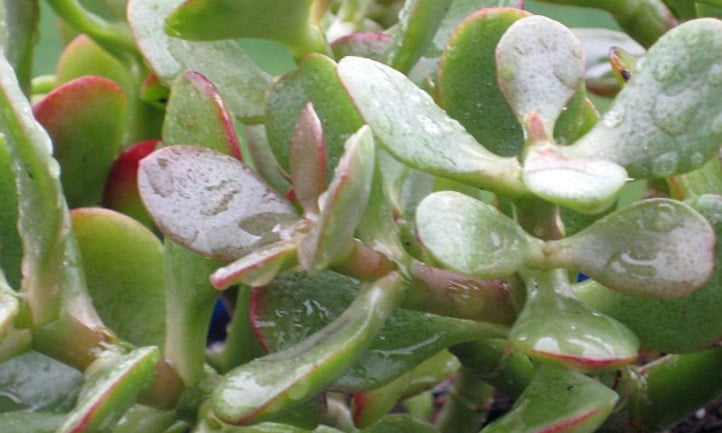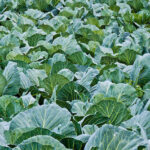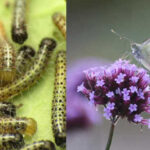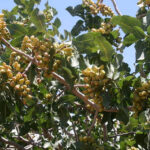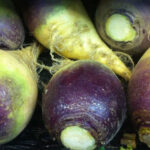The tree-like appearance of the jade plant is beautiful. Jade comes in many varieties and is easy to care for. This is why it has become one of the most popular houseplants for both beginner and expert gardeners alike. They are easy to propagate as well, making them a great intro plant for beginner gardeners.
Jade plants are yet another category of succulents native to Africa. They are highly adaptable and have varying habitats in the wild. They can live in a small pot, as long as they have the right water and temperature conditions. And they’ll remain evergreen all year long.
In this guide, you’ll learn everything you need to know about jade plant care, including pruning, propagation, and how to deal with pests and diseases. After reading this, you’ll have everything you need to grow your jade plant.
Quick Care Guide
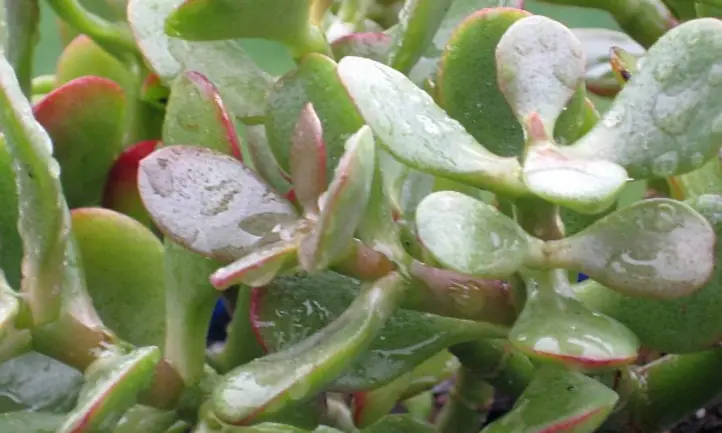
| Common Name | Jade plant, friendship tree, lucky plant, money tree |
| Scientific Name | Crassula ovata |
| Family | Crassulaceae |
| Height & Spread | Up to 12 feet tall, 4 feet wide |
| Light | Bright indirect sun |
| Soil | Good potting mix |
| Water | Let top 1 to 2 inches dry out between watering |
| Pests & Diseases | Mealybugs, spider mites, bacterial soft rot, powdery mildew, black ring disease |
All About Jade Plants
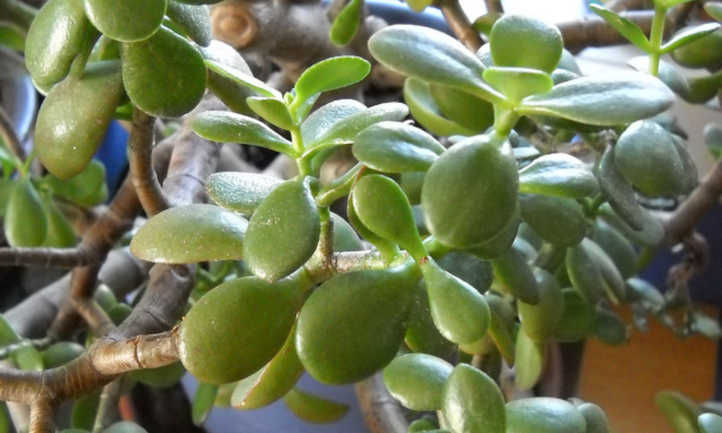
The jade plant, known botanically as Crassula ovata, is commonly called friendship tree, and lucky plant. Varieties of jade are succulent plants native to the KwaZulu-Natal and Eastern Cape provinces of South Africa, and Mozambique. Many people today keep a money plant at home for good luck, and because they are easy to care for.
Jade plants are perennial evergreen succulents with thick branches that resemble wood, and plush green leaves. The leaves grow opposite on the branches of the plant and range from a deep jade green to yellow-green. In direct sunlight, many develop a lovely red tinge on the leaf margin.
When the jade plant matures and reaches at least 2 feet tall, small inflorescences emerge and bloom white to pink star-shaped flowers at the beginning of winter. This is mostly due to changes in temperature and light. The jade plant roots are shallow, adapted to the limited moisture available in the desert, where it grows much like a small tree. Jades grow up to 12 feet tall in the wild.
People in Europe and America have been growing these tropical plants for over 100 years in their homes. This is mostly due to the encounter with the plant in Southern Africa by Dutch colonists in the late 1700s. It took some time for the plant to become a popular resident in domestic spaces, but there’s no question it will remain that way for some time.
While jades are mildly toxic to humans, they are dangerous for pets. Keep them well out of the way of any furry friends that might want to take a bite.
Types of Jade Plants
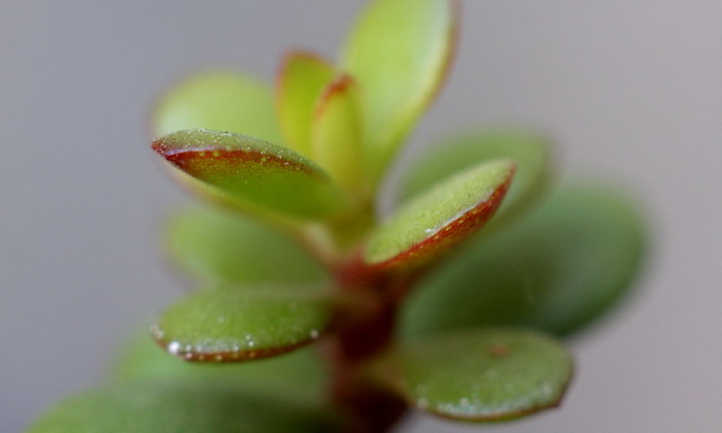
Tricolor jade is yellow, green, and white. It will also grow beautiful pink flowers during the blooming time of the year. It’s one of the shorter varieties, growing to 2-4′ tall.
Many houseplants have a variegated variety, and jade is no exception. The ‘Variegata’ type has a streaky green and white appearance and is a much bushier variety than other types of jade. If it is grown in good conditions, it will produce white flowers.
The ‘Sunset’ variety has yellow-red oval-shaped leaves that bunch together. It is one of the more popular varieties to grow in a container.
The ‘Monstruosa’ variety is a hybrid of two types: Hobbit and Gollum. Named after Lord of the Rings, these two types are very different from one another. ‘Hobbit’ has tiny curled yellow-green leaves, while ‘Gollum’ has long, fingerlike tubular leaves.
The ‘Red’ jade plant has bright red and purple leaves. It’s a popular variety in California where there’s plenty of daytime sun.
‘Blue Bird’ jade, also known as ‘Silver’ jade, has grayish-blue leaves. This variety tends to grow very short and wide and has relatively flat leaves.
‘Ripple Leaf’ is a unique type of jade that diverges greatly in structure from a normal jade plant. It’s a hybrid with leaves that ripple among one another. It’s one of the most unique varieties out there and does well in full sun, unlike most types of jade.
Jade Plant Care
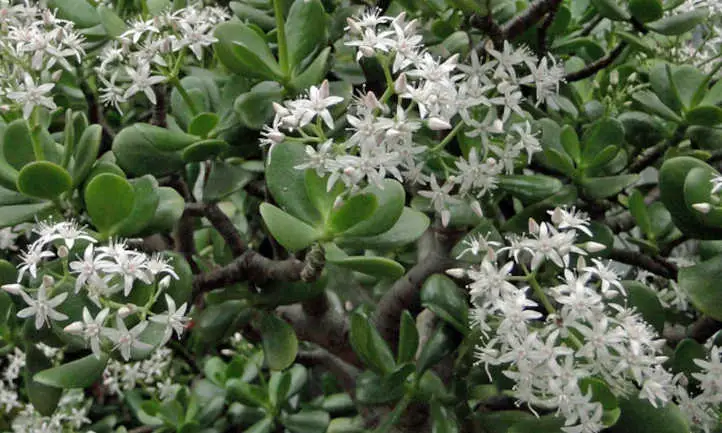
Now that we’ve touched on a few of the jade plant varieties out there, let’s talk about how to care for these mostly indoor specimens. You may find the requirements for growing them are right up your alley.
Sun and Temperature
Jade plants need medium to bright light. Place them in front of a window that gets around 4 hours of direct or filtered sunlight. Keep in mind that if you place it in direct sunlight, the edges of the leaves will turn reddish. In indirect light, the leaves will be dark green. Place them about 3 to 4 inches away from a window, because the glass will act as a magnifier, making the sun’s rays hotter on the plant. The redness of the leaves is a sign that your jade leaves are getting scorched by too much direct sun. Normal indoor temperatures are perfect for jade plants, but they do not like high humidity. They are hardy to zones 10 and 11. They will thrive if nighttime temperatures drop to 50 to 55°F and during the day they enjoy 75 to 80°F. They can survive in temps as low as 40°F but it is not a very good idea to let them get that cold. In periods that drop below 40°F, bring them indoors if they are outdoors. A light frost could kill it. The plant can be moved outdoors when the weather warms.
Water and Humidity
You may wonder how often to water jade plant specimens. Jade plants store water in their leaves, so they don’t need much water overall. When watering jade plants, water sparingly in the morning and let the top 1 to 2 inches of soil in the pot dry out before watering again. In the summer, water once per week, and in the winter, water 2 to 3 times per week to promote flowering. If the soil becomes dusty, then it’s too dry. You may find yourself watering every few weeks in dormancy. A tell-tale sign that your jade plant isn’t getting enough water is that its plump leaves will start to wither and wrinkle up and become prune-like. Jade plants don’t need excessive water during winter as they become somewhat dormant during these months. Water less and you’ll prevent root rot and leaves falling off. Jade plants enjoy humidity that’s around 30 to 50% which is right where most homes sit.
Soil
Jade plant succulents need well-draining soil. The perfect recipe for jade plant soil is 2 parts succulent soil mix, 1 part sand, 1 part peat moss, and 1 part perlite. Mix those ingredients well and they will help keep the soil from losing all of its moisture, but will also be compact and keep the roots of your crassula plant in place. Poor quality soil may support a jade tree, but it’s recommended you use formulated soil for jade plant or at least a succulent potting mix. The perfect pH for the jade plant is around 6.3.
Fertilizing Jade Plants

Jade plants are slow-growing and too much fertilizer can damage their roots. The best fertilizers for jade have a 10-20-10 or a 5-10-5 NPK ratio. When fertilizing jade, use only liquid fertilizer and dilute it to at least half-strength. They don’t need to be fertilized often — once every several weeks during the growing season of spring and summer is just fine. Avoid fertilizing them during the winter months, as jade goes dormant during this time. Jades flower at this time as well, and an excess of nutrients along with excessive moisture will prevent the lovely small white or pink jade plant flowers from putting on their show.
Pruning Jade Plants
Jade plant pruning is perhaps one of the trickier parts of caring for a jade succulent. Wait for your jade plants to become fully mature plants before pruning them. Then in early spring, begin pruning. Pruning in winter during dormancy is not recommended as jade plants are dormant then and won’t have the energy to callous over any cuts. As a general rule, do not remove more than ⅓ of your jade plant in an annual pruning. Use sterilized pruning shears, and begin by pruning at the nodes where branches diverge. Then remove any leaves at the leaf node to allow two new branches to form where you pruned them. Any leaf cuttings or stems can be kept for propagating new jade plants.
Repotting Jade Plants
Jade plant repotting is not necessary when you get it, but they can be pot-bound over time. If you do decide to re-pot, do it during the spring when they are coming out of their dormant phase and new growth is appearing. Proper care of jade plants involves repotting every 2 to 3 years for young plants, and every 4 to 5 years for mature ones. You’ll need to wait until you have dry soil in your current pot, and flip the entire plant over to remove it from the old container. Then check the roots to see if the plant needs to be divided. We’ll talk more about that process in the next section. Add some potting mix to the container. The new container should be just a couple of inches wider than your old one. Place the root ball deep enough in the new pot so the bottom leaves are almost touching the rim. Then add more potting soil to the top and place the plant in indirect sunlight. Jade plant watering should take place two weeks from the time you repot it.
Jade Plant Propagation
One of the best things about growing this plant is jade plant propagation. Not only can you propagate jade plants easy with stem or leaf cuttings, but you can also divide a root-bound plant when you’re repotting. Leaf cuttings are easy to take but have a higher failure rate than growing jade plants from stems. If you decide on leaf propagation, know that they will take a very long time to establish into full-sized jade plants.
To take a leaf cutting, choose a younger, medium-size leaf. Use scissors or pruning shears to snip off the leaf from the stem and allow the cut area to dry completely. After 2 to 3 weeks, tiny white roots will poke from the cut area and the leaf will begin to wrinkle. Put the leaf into a well-draining soil mix and water sparingly. Once roots set, you will see a stem and leaf begin to grow. Keep a watchful eye on your new jade plant. To take stem cuttings choose woody stems that are at least 4 to 5 inches tall. Cut the stem above a node, making sure that at least one node is above the cut area. Remove the fleshy leaves off of all nodes near the cut. Allow the cut stem to dry completely in a dark and dry area. After 2-3 weeks, tiny white roots will emerge from the cut. Place the dried stem in the same type of soil mix recommended for leaf propagation. Water only when the fleshy leaves have small wrinkles on them. For division, find a place in the root ball of your plant where you can untangle the roots of two main trunks. Then place each of the new plants in potting soil in bright indirect light and water them when the soil is completely dry.
Troubleshooting
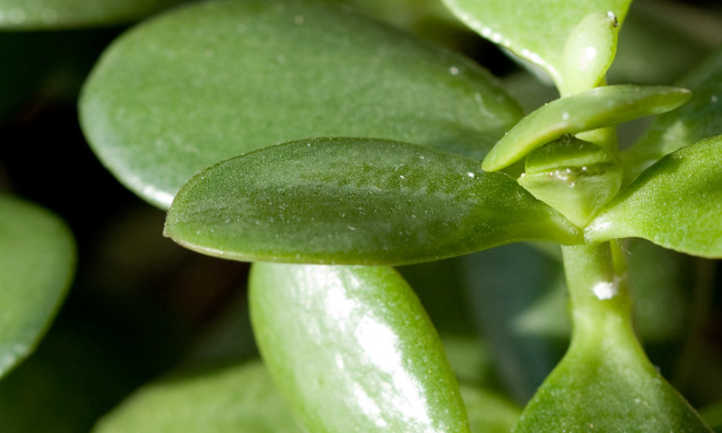
Now that we’ve discussed the basics of caring for Crassula ovata, and propagating jade plant, let’s talk about a few issues that can arise. Jade plant care is very easy overall, but there are a few things to be aware of.
Growing Problems
If you place your jade plant in a place with temperature and humidity it’s not suited for, you may see the plant exhibiting signs like leaf drop and a reddish tint on leaves. While red tips may not be a problem, in situations where the bright sunlight or full sun is involved those red tips can become yellow leaves. Instead, move your plant to an area with partial sun that has enough light to keep the plant healthy but doesn’t scorch it. In most places outside zones 10 and 11 jade plants should be grown indoors, rather than outside. That’s because jade plants live in the desert. They are native to South Africa in areas where water and humidity are scarce. Therefore, overwatering is another problem that can arise. This puts the plant at risk of contracting disease.
Pests
Mealybugs are the most common pest for jade. They’re scale insects and look like little white blobs at the bottom of leaves. They suck the sap out of the leaves of your jade and can decimate a whole plant in a short time. To get rid of them, wipe them off of your jade with a cotton ball or q-tips covered in rubbing alcohol. If you want to ensure no mealybugs will ever attack your jade again, get a systemic insecticide that works its way into the jade plant.
Although these are less common, spider mites are still a problem for jade plants. You’ll spot them on the underside of your jade leaves, where they form colonies and spin white fibrous webs. Just like mealybugs, remove them with cotton swabs of rubbing alcohol. Insecticidal soap is also an option! If the infestation is bad, cut off infested sections of jade completely.
Diseases
The Erwinia bacteria are the culprit behind bacterial soft root rot disease which causes your jade plant to collapse. It will infest the tissues of the jade plant making parts discolored and mushy. If you notice this disease, remove the affected areas with clippers and dispose of them as soon as possible. If necessary, repot the entire plant in fresh all-purpose potting mix. The key is to spot it before it affects your entire plant and other nearby plants.
Powdery mildew is one of the most annoying plant diseases out there. This fungal disease collects on the surface of plants in cloudy white patches. To get rid of powdery mildew, use a diluted spray of neem oil applied at intervals of 7 to 10 days.
Black ring disease creates black rings on the bottom of the leaves of your jade plant. It doesn’t harm the plant but makes it look pretty ugly. Spray your jade with horticultural oil, and follow up with a wipe down from a cotton swab dipped in alcohol.
Frequently Asked Questions
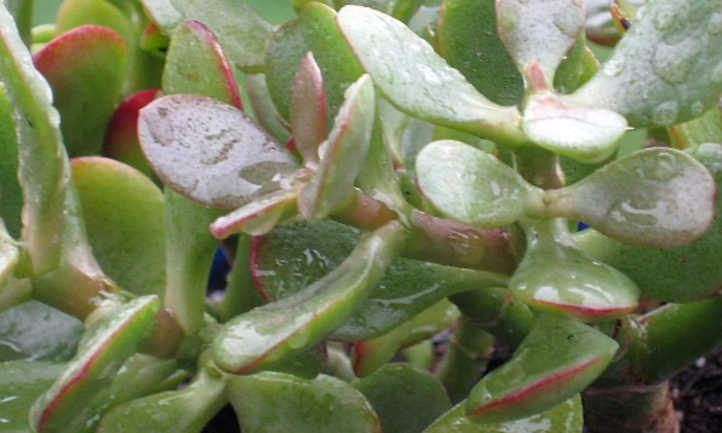
Q: Does jade plant need sunlight?
A: Yes. Bright indirect light is best.
Q: Where should you put a jade plant in your house?
A: Put it near but not too close to a window.
Q: What are the benefits of jade plant?
A: They are considered lucky plants, but practically are a lovely sight.
Q: How do you take care of a jade plant at home?
A: Check the piece above! There’s a bit that goes into it.
Q: Can I put jade plant in bedroom?
A: Yes. As long as it’s not in direct sun.
Q: Do jade plants like small pots?
A: They will live happily in small pots.
Q: Is jade plant good luck?
A: That is what some people believe!
Q: How do I get my jade plant to flower?
A: If you want your jade to show off its lovely pink or white flowers give it just the right amounts of water, sunlight, and fertilizer. See those sections above.
Q: Do jade plants clean the air?
A: Yes. They are highly effective in improving indoor air quality.
Q. My jade plant plant is tall and sparse, how can I make it shorter and bushier?
A. Pruning is the key here. Aggressively prune your jade plant, remembering that every time you cut above a ‘leaf scar’, you will create two new stems. So prune in a way that the new stems will cause it to be both shorter and bushier.
Q. My jade plant is limp and has fallen over. The stem is even a little mushy. What is happening?
A. The root of the problem is root rot, causing the stem to weaken and your jade to fall over. This is cause most often by overwatering, but could also be because you are using a soil that doesn’t drain well. Remember, jade needs very well-draining soil.
Q. I have a jade plant that was out in the cold, causing the stems to droop and leaves to become soft. Can I save it?
A. If the temperatures stayed above freezing, your jade plant should be able to come back. To speed up the process, you can cut it back to only the branches that didn’t droop in the cold.

